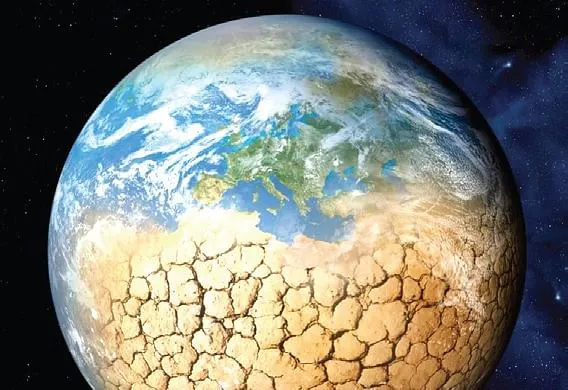Global temperatures in the 20th century are higher than ever before in at least 2,000 years, with warming now affecting the entire planet at the same time, according to a study.
It was assumed that the “Little Ice Age” — fromabout 1300 to 1850 AD — and the similarly famous “Medieval WarmPeriod” were global phenomena. However, researchers at the University ofBern in Switzerland are painting a very different picture of these allegedglobal climate fluctuations.
The research, published in the journals Nature and NatureGeoscience, shows that there is no evidence that there were uniform warm andcold periods across the globe over the last 2,000 years.
“It’s true that during the Little Ice Age it wasgenerally colder across the whole world, but not everywhere at the sametime,” said Raphael Neukom from the University of Bern.
The peak periods of pre-industrial warm and cold periodsoccurred at different times in different places,” said Neukom. Accordingto the climate scientist, the now-debunked hypothesis of climate phasesoccurring at the same time across the globe came about because of an impressionthat is defined by the climate history of Europe and North America.
In the absence of data from other parts of the Earth, thisnotion was applied to the whole planet, raising expectations that relativelycold or warm periods throughout the last 2,000 years were globally synchronousphenomena. However, it has now been shown that this was not the case,researchers said. They see the explanation for that as being that regionalclimates in pre-industrial times were primarily influenced by randomfluctuations within the climate systems themselves.
External factors such as volcanic eruptions or solaractivity were not intense enough to cause markedly warm or cold temperaturesacross the whole world for decades, or even centuries.
The researchers relied on a database from the internationalresearch consortium PAGES, which provides a comprehensive overview of climatedata from the last 2,000 years, for their investigation of five pre-industrialclimate epochs.
In addition to tree rings, it also includes data from icecores, lake sediments and corals.
To really put the results to the test, the team led byNeukomanalysed these data sets using six different statistical models — morethan ever before.
This allowed for the calculation of the probability ofextremely warm or cold decades and centuries, and not just the calculation ofabsolute temperatures.
The result was that no globally coherent picture emergedduring the periods being investigated.
“The minimum and maximum temperatures were different indifferent areas,” said Neukom.
Thermal extremes across the world cannot be inferred fromregional temperature phenomena like the oft-mentioned “Medieval WarmPeriod” in Europe and North America. Both studies show that the warmestperiod of the last 2,000 years was most likely in the 20th century.
They also show that this was the case for more than 98 percent of the surface of the Earth.This shows that modern climate change cannot beexplained by random fluctuations, but by anthropogenic emissions of CO2 andother greenhouse gases.






